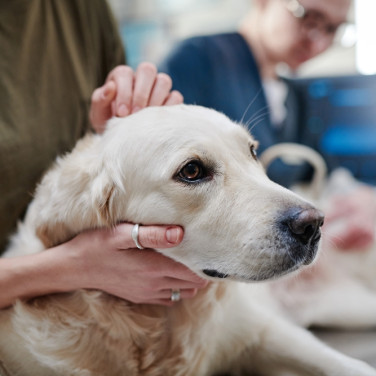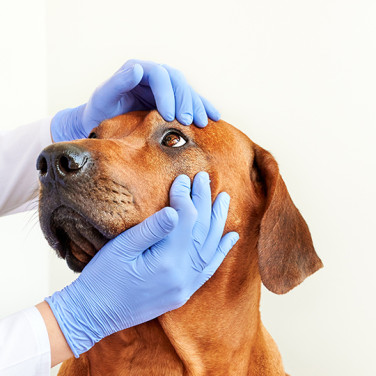DISEASES
What Are The Signs of Dog Ear Infection? Otitis Externa in Dogs
페이지 정보
본문


What is a dog ear infection?
Dog ear infection, also known as otitis externa, refers to inflammation that occurs in the external ear canal of a dog. The inflammation can be caused by various factors such as foreign bodies, parasitic infections, atopy, bacterial infections, and Malassezia infections. Signs of otitis externa typically cause itching, discomfort, and the production of discharge. If left untreated, the inflammation can spread deep into the ear, leading to otitis media and otitis interna, which can result in neurological symptoms and hearing impairment.
To treat otitis externa, it is important to identify the factors that can contribute to the condition, prevent them, and provide regular maintenance. This process can be more challenging and tedious than anticipated, and achieving complete protection may be difficult. However, with consistent management and appropriate advice from a veterinarian, your beloved dog can live comfortably without suffering from ear problems.
What causes a dog ear infection?
The factors that influence otitis externa can be broadly categorized into primary causes, predisposing factors, secondary causes, and perpetuating factors.
-
Primary causes
Primary causes directly contribute to the development of otitis externa. These causes include hypersensitivity disorders such as atopy, food and flea allergies, parasitic infections, foreign bodies like grass awns, hypothyroidism, and keratinization disorders such as seborrhea. Autoimmune disorders and tumors are also included in this category.
-
Predisposing factors
Predisposing factors do not directly cause otitis externa but alter the environment of the external ear canal, making it more prone to the development of the condition. These factors include frequent bathing, exposure to water, humid climates, excessive ear cleaning, and irritants like cotton swabs. Breeds with excessive hair in the ears or floppy ears are also considered predisposing factors.
-
Secondary causes
Secondary causes occur when the environment of the external ear canal changes due to primary causes or predisposing factors, making it susceptible to infection. Bacterial and Malassezia infections are commonly involved in secondary causes.
-
Perpetuating factors
Perpetuating factors contribute to the worsening of otitis externa and hinder the healing process. Typically, perpetuating factors involve the long-term presence of the condition, leading to tissue proliferation or deformation, and can also result in otitis media.
What are the signs of a dog ear infection?
Ear infections in dogs can cause itching, discomfort, and in severe cases, pain. This may lead the dog to continuously scratch their ears or shake their head. Visually, the ear flap may turn red or swell, and in severe cases, the skin may thicken, narrowing the ear canal. Yellow or black discharge may also be present, and in severe cases, a foul odor may accompany it. If the ear infection progresses to otitis media or internal ear infection, neurological symptoms such as circling behavior, tilting of the head, and difficulty maintaining balance may occur, potentially causing hearing impairment.
Risk of ear infections in dogs and when to see a vet
While ear infections are not life-threatening, they significantly diminish the quality of a dog's life. If the dog frequently scratches their ears, shows discomfort, or experiences redness and discharge, it is advisable to visit a veterinarian for appropriate treatment.
Dog ear infection treatment at home
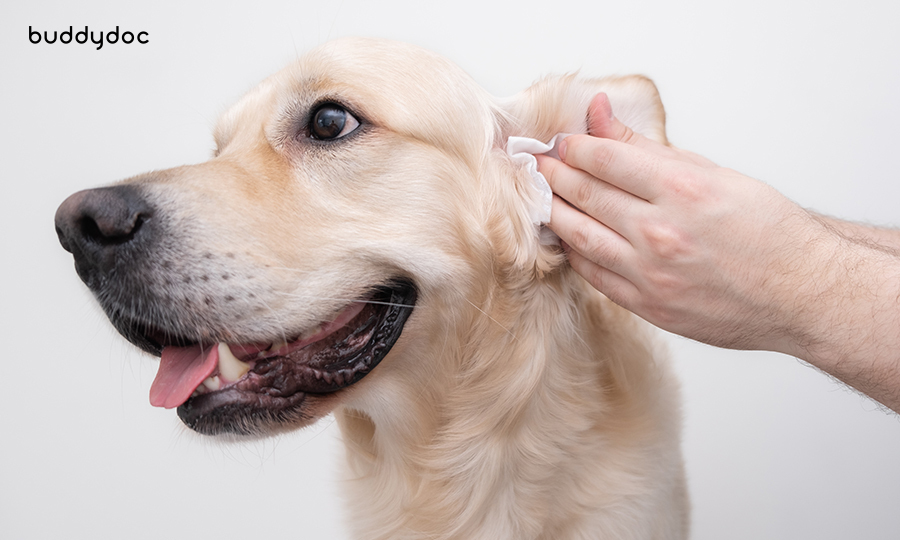
Treating ear infections effectively requires both veterinary care and regular at-home management. If the itching and discomfort are mild, and there is minimal discharge, using a pet ear cleaner regularly can be helpful. Regular ear cleaning prevents the accumulation of earwax and allows for the removal of bacteria and yeast.
How to clean your dog’s ears
The ear cleaning process involves applying an appropriate amount of ear cleaner into the ear canal, gently massaging the base of the ear, and then wiping away the liquid and discharge that comes out. The remaining solution will be naturally expelled as the dog shakes its head. It is not recommended to insert a cotton swab into the ear canal as it may push earwax further inside.
It is best to consult a veterinarian to determine the best suitable type of ear cleaner and the frequency of cleaning. It is important to prevent the ear from being exposed to an excessively humid environment for a long period, using a dehumidifier can help in these situations. Dry your dog’s ears promptly after any contact with water.
Diagnosing dog ear infection
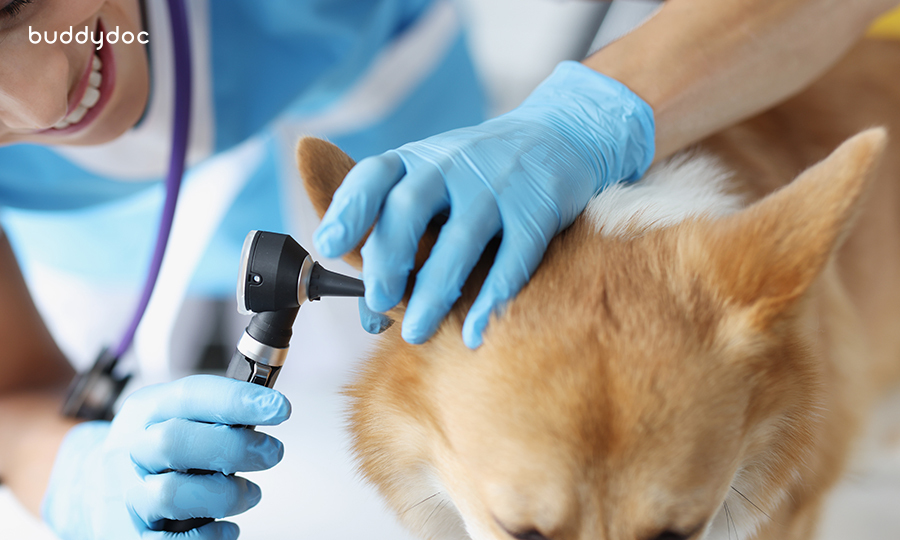
When visiting the veterinarian for an ear infection, the veterinarian will narrow down the diagnosis process based on a thorough medical history and a series of questions about your dog’s symptoms. They will inquire about the severity of scratching and head shaking, diet, and the dog's exposure to grassy areas, among other questions. A physical examination will be conducted to observe the affected ear, assess the severity of symptoms, and check for any concurrent skin conditions.
The following tests may be performed for an accurate diagnosis:
-
Otoscopic examination
This examination assesses the inside of the ear and evaluates the external ear canal and eardrum using an otoscope. Any presence of inflammation, swelling, foreign objects, parasites, or tumors in the external ear canal can be detected with this examination. It also enables the evaluation of the eardrum for damage and the presence of otitis media.
-
Cytologic examination
Using a cotton swab, the veterinarian collects a sample of the ear discharge, stains it, and examines it under a microscope to confirm the presence of bacteria and yeast.
-
Imaging tests
These tests are conducted to identify calcification in the ear canal, the presence of otitis media, or other related conditions. X-rays are commonly used, but in cases requiring a more detailed examination of the middle ear or internal ear, a CT scan or MRI may be necessary.
-
Other tests
Additional tests may be conducted to investigate suspected underlying causes. For example, if food allergies are suspected, dietary restrictions or hypoallergenic diets can be considered. If hypothyroidism is suspected, a blood test may be necessary.
Treatment for dog ear infection
The goals of treating ear infections are to address the underlying cause, alleviate itching and discomfort, and prevent further infection. In cases where symptoms are not severe, home treatment with regular ear cleaning may be sufficient. However, for more severe or recurrent ear infections, medical treatment may be necessary. The specific treatment approach will depend on the underlying cause and severity of the infection.
-
Medications
The veterinarian may prescribe medications to address an infection. This often includes topical ear drops or ointments containing antibiotics and antifungal agents. These medications are typically applied directly into the ear canal after cleaning. In some cases, oral antibiotics or antifungal medications may also be prescribed to treat systemic infections or underlying conditions.
-
Anti-inflammatory drugs
If there is significant inflammation and discomfort, the veterinarian may prescribe anti-inflammatory drugs to alleviate pain and reduce swelling in the ear.
-
Allergy management
If allergies are determined to be the underlying cause of the ear infection, the veterinarian may recommend allergy testing to identify specific allergens. Allergen avoidance or immunotherapy (allergy shots) may be recommended as part of the treatment plan.
-
Ear flush
In some cases, the veterinarian may perform ear flushes using a specialized solution to remove debris, excess wax, and infectious material from the ear canal. This can be particularly helpful in cases of severe infection or when the ear canal is narrowed or obstructed.
-
Other treatments
If an underlying condition such as hypothyroidism or hormonal imbalance is contributing to the ear infection, the veterinarian will address and treat the underlying condition in addition to managing the infection itself.
-
Follow-up care
Regular follow-up appointments may be necessary to monitor the progress of the treatment, ensure the infection is fully resolved, and make any necessary adjustments to the treatment plan.
It's important to follow the veterinarian's instructions carefully and complete the full course of treatment, even if the symptoms improve. This helps to ensure that the infection is eliminated and reduces the risk of recurrence.
Preventing dog ear infection
The most important method for preventing otitis externa is to clean the ears regularly and keep them dry at all times. Excess moisture is often the cause of infection and keeping this environment dry will drastically reduce the chance for bacteria to develop. It is crucial to recognize that otitis externa worsens and becomes more difficult to treat if left untreated, so it is essential to address it as early as possible.
Find out more about your dog’s symptoms and diseases on the Buddydoc app!
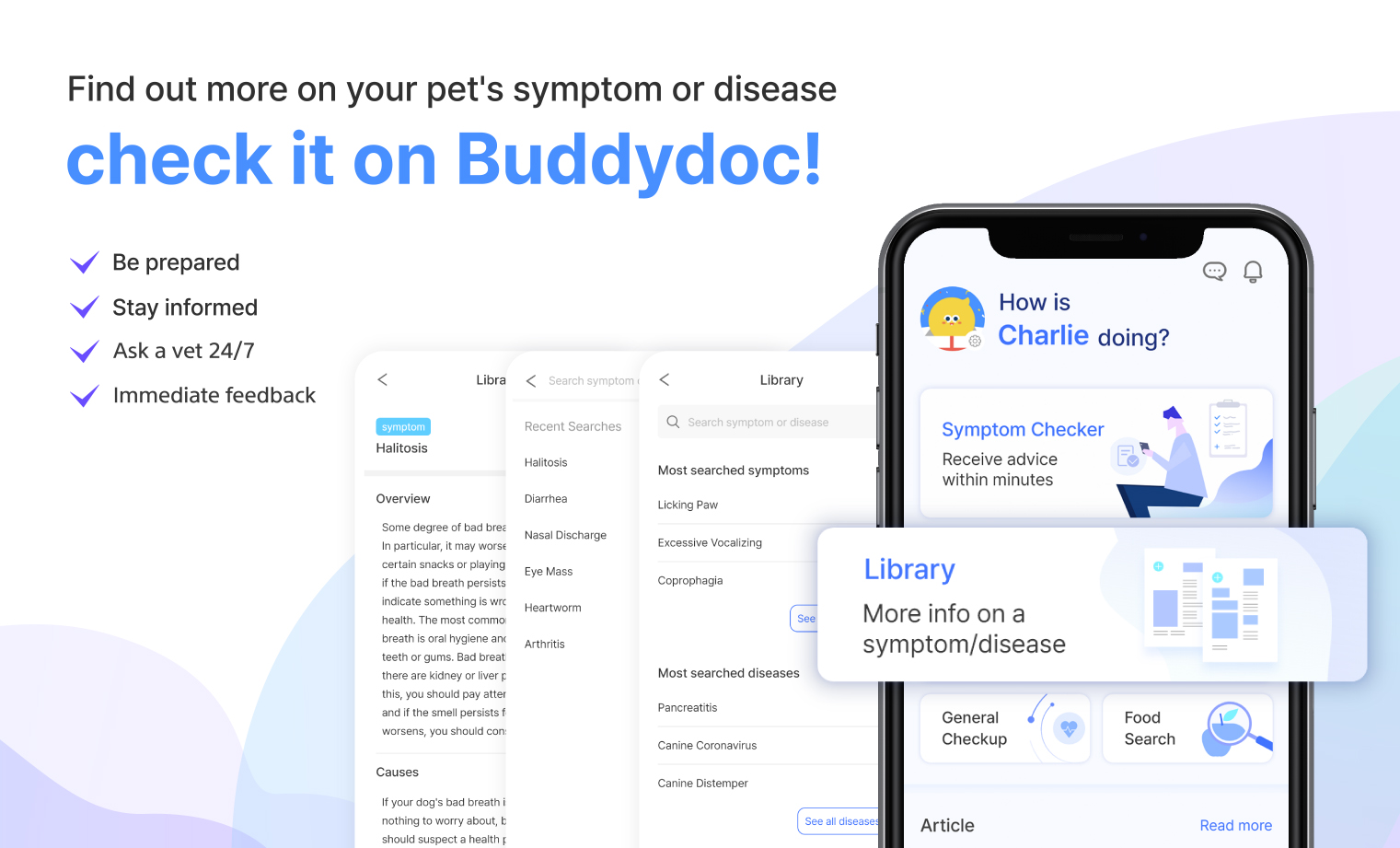
The Buddydoc library is filled with everything you’d want to know about each symptom and disease your pet may experience. If you would like to find out more about the causes, signs, treatments, preventions, and more for your dog’s disease. Try out the Buddydoc app and search for your pet’s symptoms or diseases in the Buddydoc library.




